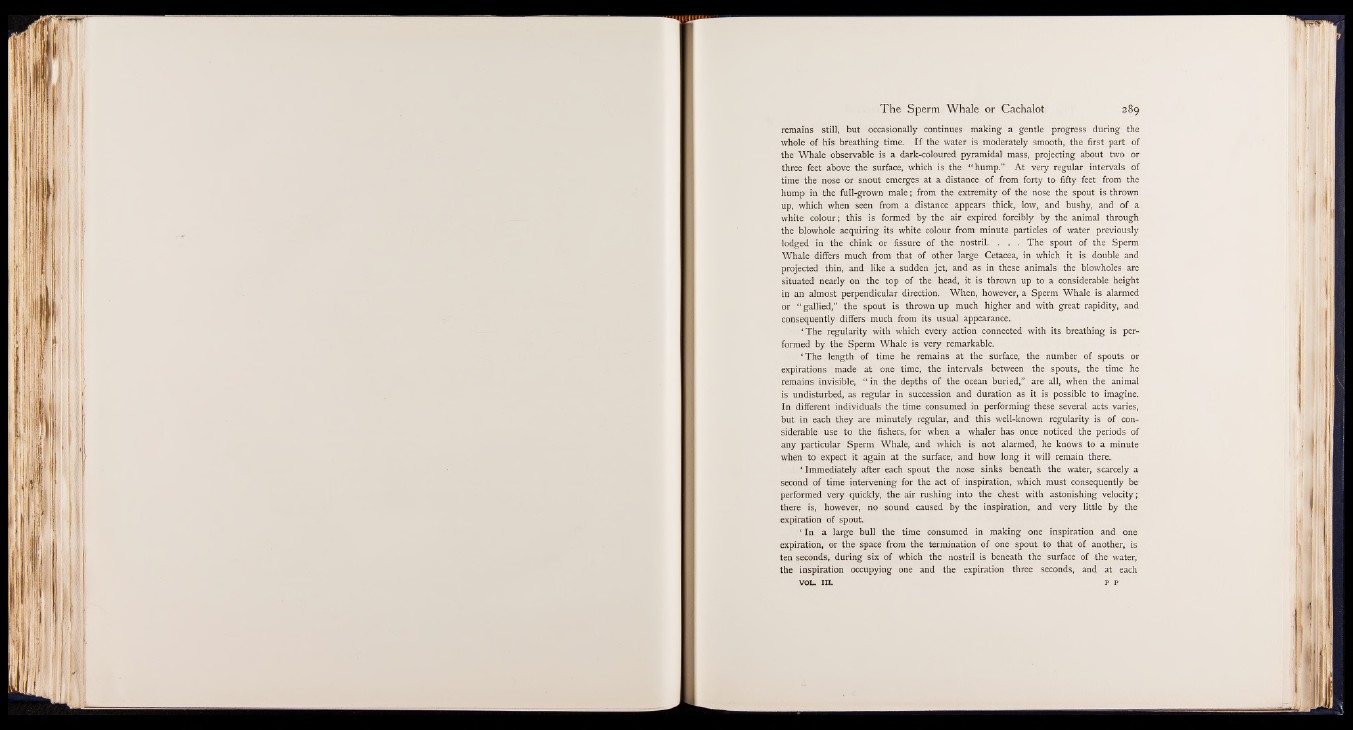
remains still, but occasionally continues making a gentle progress during the
whole of his breathing time. I f the water is moderately smooth, the first part of
the Whale observable is a dark-coloured pyramidal mass, projecting about two or
three feet above the surface, which is the “ hump.” At very regular intervals of
time the nose or snout emerges at a distance of from forty to fifty feet from the
hump in the full-grown male; from the extremity of the nose the spout is thrown
up, which when seen from a distance appears thick, low, and bushy, and of a
white colour; this is formed by the air expired forcibly by the animal through
the blowhole acquiring its white colour from minute particles of water previously
lodged in the chink or fissure of the nostril. . . . The spout of the Sperm
Whale differs much from that of other large Cetacea, in which it is double and
projected thin, and like a sudden jet, and as in these animals the blowholes are
situated nearly on the top of the head, it is thrown up to a considerable height
in an almost perpendicular direction. When, however, a Sperm Whale is alarmed
or “ gallied,” the spout is thrown up much higher and with great rapidity, and
consequently differs much from its usual appearance.
‘ The regularity with which every action connected with its breathing is performed
by the Sperm Whale is very remarkable.
‘ The length of time he remains at the surface, the number of spouts or
expirations made at one time, the intervals between the spouts, the time he
remains invisible, “ in the depths of the ocean buried,” are all, when the animal
is undisturbed, as regular in succession and duration as it is possible to imagine.
In different individuals the time consumed in performing these several acts varies,
but in each they are minutely regular, and this well-known regularity is of considerable
use to the fishers, for when a whaler has once noticed the periods of
any particular Sperm Whale, and which is not alarmed, he knows to a minute
when to expect it again at the surface, and how long it will remain there.
‘ Immediately after each spout the nose sinks beneath the water, scarcely a
second of time intervening for the act of inspiration, which must consequently be
performed very quickly, the air rushing into the chest with astonishing velocity;
there is, however, no sound caused by the inspiration, and very little by the
expiration of spout.
‘ In a large bull the time consumed in making one inspiration and one
expiration, or the space from the termination of one spout to that of another, is
ten seconds, during six of which the nostril is beneath the surface o f the water,
the inspiration occupying one and the expiration three seconds, and at each
VOL. III. p p